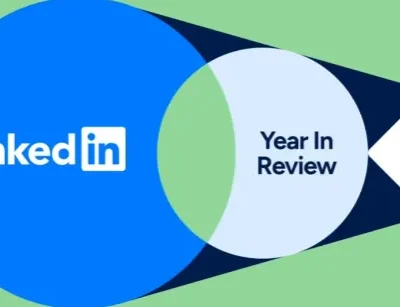Many renters may be settling down in their home cities as migration outside of metros and across state lines appears to be slowing, according to search data compiled for the Apartment List 2024 Renter Migration Report.
However, renters in California and New York are still seeking out-of-state apartments, presumably to escape expensive rents and a high cost of living. Meanwhile, more people are moving into affordable states, such as North Carolina, South Carolina, and Florida, than moving out.
While the Apartment List data is only based on the search preferences of users who registered in 2023 and doesn’t reflect completed moves, it aligns with 2023 migration data from the Census Bureau. The trends may provide investors with insight into future population growth and rental demand in different metro areas.
Fewer Renters Are Moving Out of Town
In 2022, the Census Bureau observed an increasing state-to-state migration trend, even as overall migration numbers were slightly down from the year prior. Nearly 20% of movers crossed state lines that year, a trend that may have been facilitated by remote work arrangements. By comparison, only 16.7% of all movers left their state in 2019.
But based on search data, renters may have already begun to increasingly seek apartment homes nearby in 2022. For the second year in a row, the percentage of Apartment List users searching across metros or states has declined.
In 2023, the drop was even more significant. 38.5% of users searched for homes in a different metro area in 2023, down from 40.7% in the year prior. And only 25.6% sought to cross state lines, a decrease from 27.7% in 2022. Census data from 2023 also showed states losing and gaining population in smaller numbers than in prior years.
California and New York Still Losing Renters to Texas and Florida
Rents across the nation increased rapidly over the course of the pandemic, but renters in high-cost cities were particularly squeezed. Even after rental hikes slowed and rent prices fell in some areas last year, the median asking rent in New York City sits near its peak at $3,500 per month. Rising rents, along with high prices at the grocery store and everywhere else, likely became too much for some residents of the West and Northeast, driving outbound migration from those areas.
Rent prices remain elevated relative to before the pandemic, and Apartment List data show that the exodus from pricier states continued in 2023. California and New York lead the states with the highest outbound migration, both in absolute terms and as a share of the total population. For example, the data show 1.1% of residents leaving New York and 0.9% of residents leaving California.
A significant share of Hawaii, Alaska, and Illinois residents were also looking to leave the state in 2023. In absolute terms, New Jersey and Massachusetts were behind New York and California.
Some more affordable states, on the other hand, have seen more renters seeking to move in than out. These include Florida, Texas, North Carolina, South Carolina, Delaware, and Tennessee. The top states for inbound migration as a percentage of the total population were South Carolina, which exhibited a 1.6% change, and Delaware, with a 1% change.
People leaving California were most likely to search for apartment homes in these states.
| State | Share of Outbound Searches from California Residents |
|---|---|
| Nevada | 12% |
| Texas | 12% |
| Arizona | 11% |
| Washington | 8% |
| Florida | 5% |
People leaving New York searched most frequently in these states:
| State | Share of Outbound Searches from New York Residents |
|---|---|
| New Jersey | 19% |
| Florida | 9% |
| Massachusetts | 7% |
| Pennsylvania | 6% |
| California | 6% |
People searching for apartment homes in Texas lived in these states:
| State | Share of Inbound Searches for Texas Homes |
|---|---|
| California | 11% |
| Florida | 10% |
| Louisiana | 5% |
| New York | 5% |
| Illinois | 5% |
People searching for apartment homes in Florida lived in these states:
| State | Share of Inbound Searches for Florida Homes |
|---|---|
| New York | 9% |
| Georgia | 9% |
| Texas | 8% |
| California | 6% |
| Pennsylvania | 5% |
People leaving California were most likely to search for apartment homes in these states.
Markets Attracting the Most Interest from Out-of-Towners
Metro-level data from Apartment List is similar, with many of the top metros for inbound migration in North Carolina, South Carolina, and Florida, and is also consistent with data from the Census Bureau.
Durham, North Carolina, and Charleston, South Carolina, are hot spots for out-of-towners, drawing interest from residents of nearby Raleigh and Charlotte but also from New York City. Many of the metros below are sought after by residents of more expensive metro areas. For example, Stockton drew interest from San Francisco renters, while New York City renters commonly searched for Bridgeport.
Below are the top 10 metros by inbound searches from outside the metro area:
| Metro | Percentage of Inbound Searches from Outside the Metro Area |
|---|---|
| Durham, North Carolina | 62.7% |
| Charleston, South Carolina | 60.9% |
| Lakeland, Florida | 60.1% |
| Stockton, California | 57.7% |
| Cape Coral, Florida | 56.6% |
| Colorado Springs, Colorado | 56.6% |
| North Port, Florida | 55.6% |
| Bridgeport, Connecticut | 55.4% |
| Greenville, South Carolina | 55.4% |
| Greensboro, North Carolina | 54.9% |
How Migration Trends Impact Investors
Real estate investors can find success when they make informed decisions about where to invest based on indicators of future population and price growth. When a city (think Miami or Denver) experiences rapid home price appreciation and a red-hot rental market due to high housing demand from out-of-towners, most of us will look back, wishing we had invested in real estate in that area before it all started.
For example, had you bought a typical home in Miami-Dade County at the median price of $329,830 just five years ago, not only would you be able to sell it today for nearly $600,000, but you’d also be able to rent it for a median of $1,895. Short of buying a time machine, the best thing investors today can do is to look for indicators that a more affordable city will similarly become popular with out-of-towners in the future.
While the trends point to renters fleeing expensive metros for more affordable ones, a city has to be more than just cheap to attract out-of-towners. It also must have plenty of job opportunities and be a desirable place to live. That’s why culture-rich Durham, with its strong job growth, good schools, and younger vibe, is so popular with renters from different metros. The city ranks third on U.S. News’ list of the Best Places to Live.
Ultimately, an Apartment List user’s search preference doesn’t equate to a completed move, but this kind of migration data can give investors a heads-up before interest in a city is reflected in population estimates. And based on multiple measures, the Carolinas are worth watching.
The Bottom Line
People move for a variety of reasons, including a change of scenery. But data from Apartment List shows a common trend of renters seeking to leave the most expensive urban hubs in the West and Northeast for more affordable (but still vibrant) havens in the Sun Belt and Mountain West.
Overall, out-of-state and cross-metro moves are becoming less common. But that may be even more reason to pay attention to the states and metros that are still gaining or losing interest from renters.
If you’re interested in long-distance investing, you might consider exploring markets in states like North Carolina, South Carolina, Florida, Texas, Delaware, and Tennessee. While migration data should never be the only factor you consider, it can give you a hint as to where to begin your research.
Make Easier and Smarter Financing Decisions
Deciding how to finance a property is one of the biggest pain points for real estate investors like you. The wrong decision may ruin your deal.
Download our What Mortgage is Best for Me worksheet to learn how different mortgage rates impact your deal and discover which loan products make the most sense for your unique position.

Note By BiggerPockets: These are opinions written by the author and do not necessarily represent the opinions of BiggerPockets.




